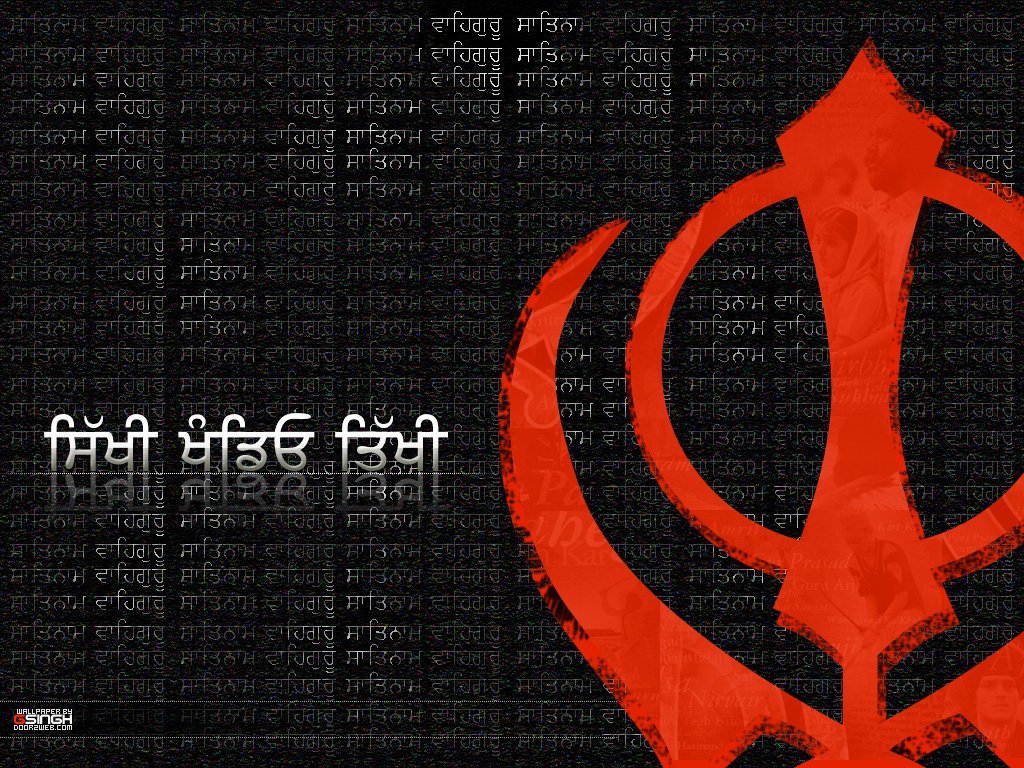| NANAK SHAH FAKIR: The Dilemma & the Solution |
|
I.J. Singh & Rajwant Singh
Moreover, Sikhi clearly teaches that whatever is born of flesh must die. Whether we use the word death for the Gurus or prefer one of many euphemisms like passed away, went to a heavenly abode, or merged with God, it is undeniably true that every one of the ten Gurus in physical form went the way of all flesh. Yet, humans that we are, we look for ways to deny the humanity of our prophets; we think that establishes their divinity and heightens their status. Just look at how Christianity tries to separate Jesus from the two fundamental experiences that no human being can escape - birth and death. He is supposed to be virgin-born, and to have ascended to the heavens bodily and spiritually after his crucifixion and resurrection. Islam goes a step further. There are no pictures, portraits or icons of Mohammed. Playing Mohammed in film or on stage might become grounds for a Fatwa or Jihad. Mohammed is also said to have ascended to heaven on a horse, hence the Al Aqsa mosque in Jerusalem. On the other hand, Moses has been repeatedly portrayed by actors on stage and film and so has Jesus, with nary a protest. His followers understand the educational value of such events. Hollywood produced many epics on various Biblical characters, including Moses, which helped educate the masses about these historical figures. Moses is considered a prophet by the Jews and the blockbuster "Ten Commandments" that highlighted Moses remains ever popular even after four decades. Many of us got our early education about the Jews and Judaism from this movie. Some of these Biblical sagas topped the Titanic at the box office. Last year again, Son of God, a movie on Jesus Christ, sold out entire houses even before its scheduled release. Sikhi emerged from the cultural realities of Northwest India where two religious cultures - Hinduism and Islam-- collided. In that part of the world, mixed cultural practices and attitudes prevail and, in many issues, Sikhi is visibly affected. Clearly, in Sikhi, the flesh of the Guru-Founders is not important; the ideas and teachings are paramount and eternal. In India, Sikhi flourishes in a largely Hindu society in which innumerable gods and goddesses thrive. Ordinary mortals portray them in tons of movies made every year. Their images on icons are dime a dozen. Such popular "street art" adorns calendars. Their representations are sold for pennies in the marketplace. Sometimes actors and actresses who play the part in movies and on stage reap enormous benefits - ordinary, uneducated village folk associate holiness and godly qualities to the players and load them with donations, gifts and respect that their real lives may not deserve. And Sikhi cringes at the idea of similar things happening to the so called pictures, icons and statues of their Gurus. Hence the Sikh injunction against any human actor playing the role of a Guru on screen or stage. Sounds almost Islamic, doesn't it? Nothing complicated about these matters so far, one might think. But think again. Humans apparently have a need of visual images of Gurus to relate to; the imagery in worship services is not enough. And our cultural base is largely Hindu. So, one can buy calendars on street corners adorned by artistic representations of Gurus. Some artists, like Sobha Singh, have been phenomenally successful. What do you think, when Sobha Singh painted a representation of Guru Nanak or Guru Gobind Singh, did a model sit for him or not? Is this a religious crime committed both by the artist and the needy model? In the 1970's the primary Sikh regulatory body, the SGPC bought the copyright of Sobha Singh's work and officially gave it their seal of approval. So, icons and calendars with representations of Gurus are to be found in the marketplace as well in many homes and businesses. We are not defending this widespread custom but we could argue, as many do, that perhaps these representations connect the viewer with the Guru and thus to the message, even if not as cleanly and clearly as we would wish. Why not let the connection flourish and hope for progress? Of course, that requires tolerance of what exists today coupled with a vigorous continuing program of education on the status of such artifacts, and a policy that is consistent, not loaded with contradictions. But there is always a hooker - a however! An India-based Sikh named Harinder Singh Sikka just made a movie on Guru Nanak. (A disclaimer here that neither of us has seen the movie yet. It hasn't yet been widely available). Apparently, an actor played the part of Guru Nanak. And all hell broke loose. The Gurus have themselves emphasized that their physical entity is not important. However, their lives are uniquely tied to the existence of Sikhism. The historical narratives provide inspiration to masses and many try to emulate them. Humans treasure role models and heroes because they provide a sense of hope to many. The question is how to present these stories and narratives. Dhadees and Kathavachaks narrate with much detail the various incidents and the Gurus' expressions and reactions which would create a picture in the minds of the listeners. The goal is the same - to connect the Sikh to the Guru. Janamsakhi literature, an elemental Sikh tradition, mixes history, mythology and lore, not unlike many Christian parables. This body of resource material on Guru Nanak and his reaction to various situations is often instructive. How do you capture that and present it in the current social milieu. Technology and virtual reality can do wonders in breathing life into history. A recent animation on Sikhi, Chaar Sahibzaday, broke all records for any religious movie coming out of Bollywood. Gurdwaras and Sikh families thronged to it; others served langar to encourage viewing. Many non-Sikhs in India saw it and were awed with the stories of these warrior-martyrs. In contrast stands the example of Sarbans Daani, a recent movie on Guru Gobind Singh. Despite the fact its music was composed by the iconic master Jagjit Singh, the movie flopped on the box office. The likely reason was that it depended on still pictures of Guru Gobind Singh. In trying new media the question is how far we can go. Remember that paintings and sketches, too, are imaginative and depend on a model. Keep in mind that the actors' job is to capture life by stepping into the shoes of the character they portray. There is no assumption that their lives transform into that of the character. But the movies do impact and remain etched in the minds of the people who leave the theaters inspired. It is this that we need to explore in the light of the existing ignorance about Sikhi and the lives of our Gurus who founded it. A recent poll revealed that less than 1% of Americans had heard the name of Guru Nanak, and only 8% knew anything about Sikhs. The situation in India may not be much better. Few non-Sikhs have any idea of Sikhism and Guru Nanak. How do we fill this abysmal gap? Sikhi and Nanak's message needs to travel outside the four walls of gurdwaras, our community TV, and radio media. Guru Nanak traveled thousands of miles to get his message across the world. So we would suggest this. Don't be busy banning Harinder Singh Sikka's creative work. Look at it closely. Use the movie for education and tell people why Sikhi is better connected to the word than emotionally attached to a Guru's physical persona. If Guru Nanak had access to Facebook, twitter or movies, would he have hesitated to click the button?
[email protected]om [email protected] |



 Let one thing be clearly understood. History tells us that that no Founding-Guru of Sikhi - not one of the ten - ever sat for a picture or a painting. There exists no record in words, or sketch of what any Guru looked like. Sikhi is absolutely clear -- no one knows what any Guru looked like. There is no reliable account left by anyone who was a contemporary of the Gurus.
Let one thing be clearly understood. History tells us that that no Founding-Guru of Sikhi - not one of the ten - ever sat for a picture or a painting. There exists no record in words, or sketch of what any Guru looked like. Sikhi is absolutely clear -- no one knows what any Guru looked like. There is no reliable account left by anyone who was a contemporary of the Gurus.


